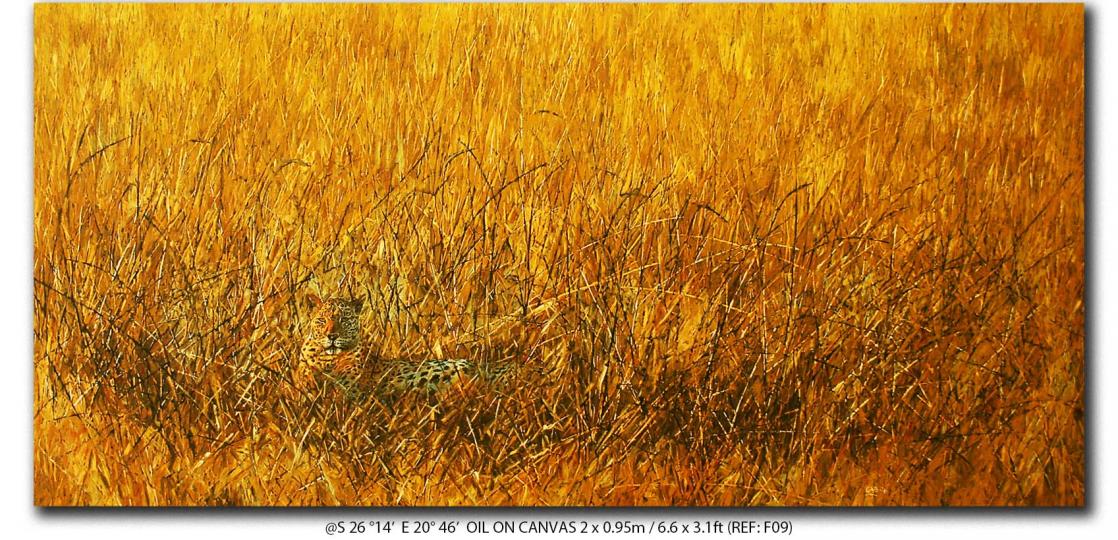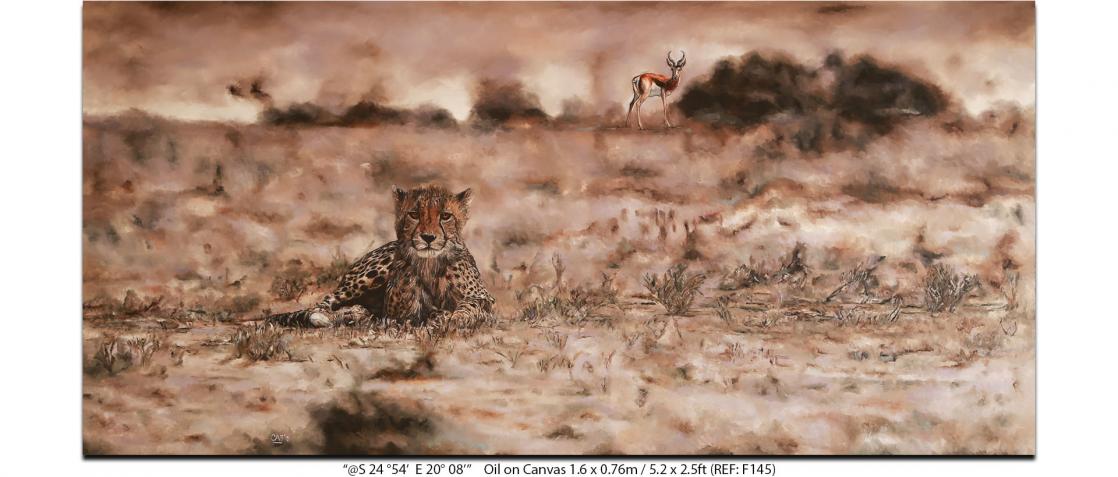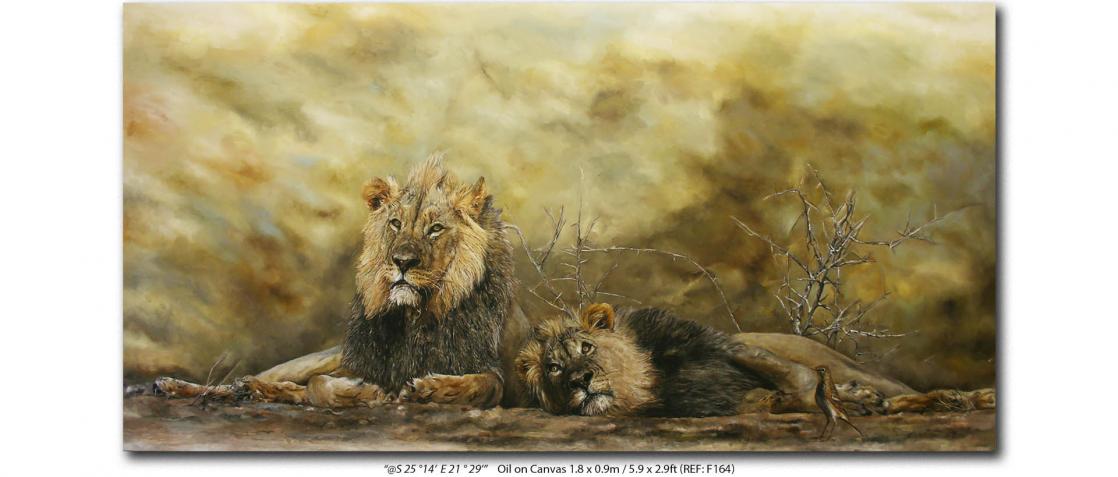For South African artist Cobus van der Walt, life, art, and experience are seamlessly interwoven. His richly vivid, vibrant, and evocative canvases reflect a deeply-rooted connection to the Africa that is home, and to the landscape that is a crucial part of the artist’s being.
Lengthy retreats into the remote African bush roused van der Walt’s senses and allowed him to fill his vast canvases with scenes of the continent’s extraordinary beauty, quiet majesty, and raw intensity. Over the years, regular travels through southern and eastern Africa have provided further inspiration.
“My paintings capture moments that reflect not only my vision of the landscape, but the essential magic of the African continent itself – an environment of seemingly boundless proportions that merges total aridity with brimming fertility. When I pick up my brush, I’m seeking to interpret both the immediacy of my own experience and the sheer energy of Africa’s plains.”
Although paintings of nature and wildlife are often characterized by the stillness of realism, van der Walt’s work possesses a unique vigour and vitality that sets him apart. “Life forms are inseparable from movement, space and time. Therefore my art reflects the dynamism, rhythms, and tensions that exist among the animals in the wild.” Such an unconventional approach to the landscapes he depicts makes viewing van der Walt’s work both visceral and captivating.
With first-hand experience of the spectacular continent, and a flair for technical experimentation, van der Walt’s canvases throb with life and movement. From a stampede of migrating wildebeest in the Serengeti, to a horizon of Namaqualand’s wild flowers bursting into bloom, each painting is an ode to nature’s abundant beauty. Van der Walt’s intrinsic understanding of his subject matter is palpable - and indicative of a man whose ties to Africa go way beyond the creation of art.
The overwhelming appeal of van der Walt’s art is not confined to those who know Africa, to those who live there, or to those who may have visited. Rather, it is a universal audience that yearns to bring some of the profound perfection of the living world into their own environments.











